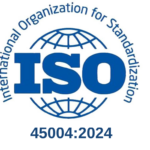Most Australian organisations over a certain size incorporate a regular safety auditing program as part of their safety management systems. As outlined in our July 2016 issue of Insight, these auditing programs should look beyond mere compliance to achieve more valuable outcomes for the organisation. This issue, we explore some of the benefits of regular safety auditing.
At the risk of stating the obvious, the first and foremost benefit to be gained from a well-run safety auditing program is the prevention of harm to workers. As it is a legislated requirement to ensure, so far as is reasonably practicable, the health and safety of workers, compliance with legal obligations is also supported.
The second benefit to an organisation is an ongoing improvement to the management of safety. The underlying purpose of auditing is to identify problems before they have a detrimental impact on workers and the organisation, however this process should never be solely about identifying a missed or poorly managed hazard; it must stretch beyond that to also identify the strengths and weaknesses of the organisation’s safety management system (SMS). An audit which fails to identify problems with the SMS can only prevent the safety incidents of today, not the ones that will inevitably develop later as a result of systemic failures. Conversely, an audit which extends beyond merely noting hazards and also scrutinises the operation and effectiveness of the overall SMS will assist in achieving continual improvement in safety management.
Thirdly, a good auditing process has the capacity to identify potential problems before they arise, thus short-circuiting impending harm to workers and loss/damage/cost to the organisation. This is where the experience and qualifications of dedicated or third-party auditing personnel come into their own, as without specialist knowledge it can sometimes be difficult to imagine the full range of consequences that could result from what might seem at first glance to be a trivial issue.
Finally, although frequently seen as a cost to the business, dedicating sufficient organisational resources to an effective safety auditing program can benefit the organisation’s bottom line. A well-conducted safety audit provides evidence-based recommendations for change to improve the management of health and safety. This not only saves the organisation from the costs of a potentially higher rate of safety incidents, but also prevents wastage of resources on ineffective interventions into the management of safety.
Please contact QRMC for more information.











